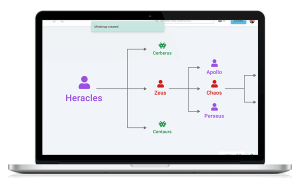Hey there, Knowhub! Welcome to this deep dive into the ever-expanding world of subscription-based software. From streaming services to productivity suites and even creative tools, it seems like everything is moving towards a subscription model these days. But with so many options and recurring costs, it’s natural to wonder: is the subscription software revolution truly beneficial, or is it just a clever way for companies to lock us into perpetual payments? Let’s explore this question together and uncover the pros, cons, and everything in between.
The Allure of Subscription Software: Why the Shift?
Convenience and Accessibility
One of the biggest draws of subscription-based software is its accessibility. Traditional software often required large upfront payments, making it a significant investment. Subscriptions break down that barrier, allowing users to access powerful tools for a fraction of the cost, spread out over time. This makes professional-grade software more accessible to individuals, small businesses, and startups.
This shift also brings convenience. Automatic updates ensure you always have the latest features and security patches without the hassle of manual downloads and installations. Cloud-based subscriptions offer the added benefit of accessibility from anywhere with an internet connection, liberating users from device dependence.
The Ever-Evolving Feature Set
Subscription models incentivize developers to continuously improve and expand their software offerings. Regular updates and new features are rolled out to keep subscribers engaged and justify the recurring fee. This ensures that the software stays relevant and competitive in the ever-evolving tech landscape.
This constant evolution is a double-edged sword, however. While users benefit from ongoing improvements, they also have to adapt to changes, which can sometimes disrupt workflows and require relearning certain aspects of the software.
The Price of Convenience: Weighing the Costs
The Subscription Trap: Recurring Costs vs. Ownership
The most significant downside of subscription-based software is the ongoing cost. While individual subscriptions might seem affordable, the cumulative expense over time can quickly add up. Furthermore, you never truly own the software, meaning access is revoked if you stop paying. This raises the question of long-term value compared to traditional one-time purchase software.
Consider the scenario where you subscribe to multiple services. Individually, they may seem reasonably priced, but the combined monthly or annual cost can become a substantial burden, especially for budget-conscious individuals or businesses.
The Flexibility Factor: Scaling Up and Down
Subscription models often offer different tiers to cater to varying needs. This allows users to scale their subscriptions up or down based on their current requirements. Need more storage? Upgrade to a higher tier. Project finished? Downgrade to a basic plan. This flexibility can be a significant advantage for businesses with fluctuating demands.
However, this tiered system can also lead to “feature creep,” where essential features are locked behind higher-priced tiers, pushing users to spend more than they initially intended. This can create a feeling of being nickel-and-dimed, impacting overall user satisfaction.
Making the Right Choice: Is Subscription Software Right for You?
Assessing Your Needs and Budget
The decision of whether to embrace subscription-based software ultimately depends on your individual needs and budget. Consider factors like how frequently you’ll use the software, the importance of having the latest features, and your comfort level with recurring expenses. The rise of subscription-based software: is it worth it? The answer is nuanced and depends entirely on your specific circumstances.
For occasional users, a one-time purchase of less feature-rich software might be more economical. However, for power users who rely on cutting-edge tools and constant updates, a subscription might be the better choice.
Long-Term Value and Total Cost of Ownership
When evaluating subscription-based software, consider the long-term value and total cost of ownership. Calculate the cumulative cost over several years and compare it to the price of a perpetual license for similar software (if available). Factor in the benefits of automatic updates, cloud access, and ongoing support. The rise of subscription-based software: is it worth it? It’s crucial to do the math.
Consider the software’s lifespan. Will it still be relevant and supported in five years? If not, a subscription might be more practical. However, for timeless software that remains valuable for extended periods, a one-time purchase could offer better long-term value. The rise of subscription-based software: is it worth it? Long-term value is a key consideration.
Subscription Software Comparison Table
| Feature | Subscription Software | Traditional Software |
|---|---|---|
| Cost | Recurring Fee | One-time Purchase |
| Updates | Automatic | Manual/Paid Upgrades |
| Accessibility | Often Cloud-Based | Typically Local |
| Flexibility | Scalable Plans | Limited |
| Ownership | None | Perpetual |
| Long-Term Cost | Potentially Higher | Potentially Lower |
Conclusion
The rise of subscription-based software: is it worth it? As we’ve explored, there’s no one-size-fits-all answer. The decision hinges on a careful evaluation of your needs, budget, and long-term goals. By understanding the advantages and disadvantages of subscription models, you can make informed choices that align with your specific circumstances.
Knowhub, we hope this deep dive has provided valuable insights into the world of subscription software. Be sure to check out our other articles for more helpful tips and information on navigating the ever-changing tech landscape.
FAQ about The Rise of Subscription-Based Software: Is It Worth It?
What is subscription-based software (SaaS)?
Instead of buying software outright, you pay a recurring fee (monthly or yearly) to use it. Think Netflix for software.
Why are so many software companies switching to subscriptions?
It provides a steady income stream for them and allows them to continuously update and improve the software.
Is subscription software more expensive in the long run?
It can be. While initial costs are often lower, the recurring fees can add up over time. You need to evaluate your usage needs.
What are the advantages of subscription software?
Automatic updates, lower upfront costs, predictable budgeting, and access to the latest features are key benefits.
What are the disadvantages of subscription software?
You never actually own the software, you need a constant internet connection for many SaaS products, and costs can accumulate over time.
What happens if I stop paying my subscription?
You lose access to the software and any data stored within it (depending on the provider’s terms).
Is subscription software good for small businesses?
It can be! Lower upfront costs and access to powerful tools can be a boon. However, carefully evaluate your needs and budget.
How do I choose the right subscription software?
Consider your specific needs, budget, and compare features and pricing across different providers. Read reviews!
Are there alternatives to subscription software?
Yes, some companies still offer one-time purchase software licenses, though these are becoming less common. Open-source software is another option.
Is the trend of subscription-based software likely to continue?
Yes, it’s expected to continue growing as more companies and consumers embrace the flexibility and accessibility of this model.






